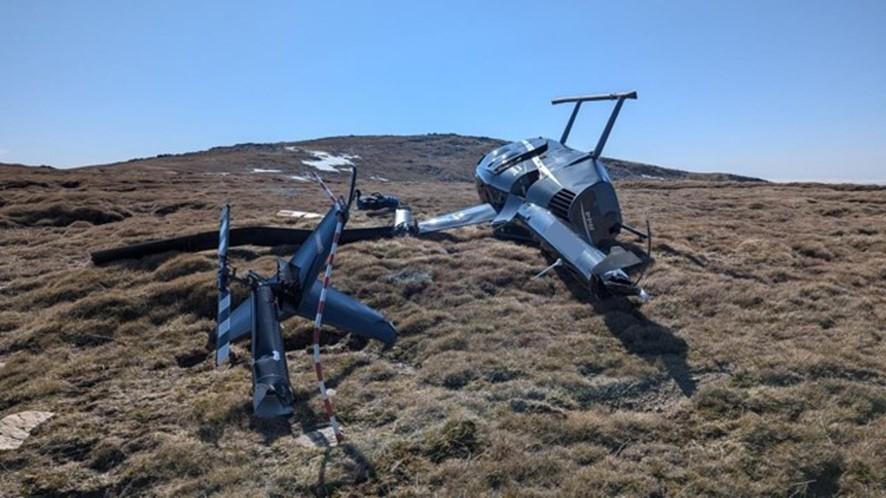What happened
On 13 October 2024, a Robinson R44 helicopter was being used to conduct a private flight from Tooma to Moree, New South Wales with a pilot and 3 passengers on board. The intention was to conduct a scenic flight in the local area prior to continuing towards the destination.
The pilot’s phone, which the pilot was using for navigation, was secured in a commercial mount attached to the interior of the helicopter. During the flight, the phone became dislodged from the mount and fell to the floor near the pilot’s feet. Concerned that the loose phone would interfere with the flight controls, the pilot elected to conduct a precautionary landing so that it could be retrieved and resecured.
The pilot selected a nearby landing site at an elevation of approximately 6,300 ft. As they approached to land, the pilot applied power but due to the high density altitude associated with the elevation of the selected landing site they were unable to arrest the descent rate. The pilot performed a run-on landing,[1] during which a skid caught on a tussock of grass and the helicopter turned 180° and tipped on its side. During the accident sequence the tail rotor contacted the ground resulting in the boom breaking and separating the tail section from the fuselage. The helicopter was substantially damaged (Figure 1), and the pilot and passengers evacuated without injuries.
Figure 1: Robinson R44 damage

Source: Alex Mougenot, edited by the ATSB
Safety message
Loose items in an aircraft can cause a significant distraction for the pilot and can potentially interfere with flight controls, leading to a loss of control. They can also become dangerous projectiles causing serious injuries during an abrupt stop, turbulence or an accident sequence. All loose items should be stowed prior to departure. When using portable devices as an electronic flight bag (EFB), pilots must ensure that they are securely attached or stowed during flight. The Civil Aviation Safety Authority’s Advisory Circular 91-17 – Electronic flight bags contains requirements for mounting and stowing of EFBs in aircraft.
This occurrence also highlights the importance of inspecting and evaluating the suitability of a landing area before conducting a precautionary landing. This includes considering the effect of elevation and density altitude on aircraft performance and the risks involved in landing on an unprepared surface.
About this report
Decisions regarding whether to conduct an investigation, and the scope of an investigation, are based on many factors, including the level of safety benefit likely to be obtained from an investigation. For this occurrence, no investigation has been conducted and the ATSB did not verify the accuracy of the information. A brief description has been written using information supplied in the notification and any follow-up information in order to produce a short summary report, and allow for greater industry awareness of potential safety issues and possible safety actions.
[1] Run-on landing: A manoeuvre used to transition from forward flight to a landing when there may not be sufficient power available to sustain a hover.


